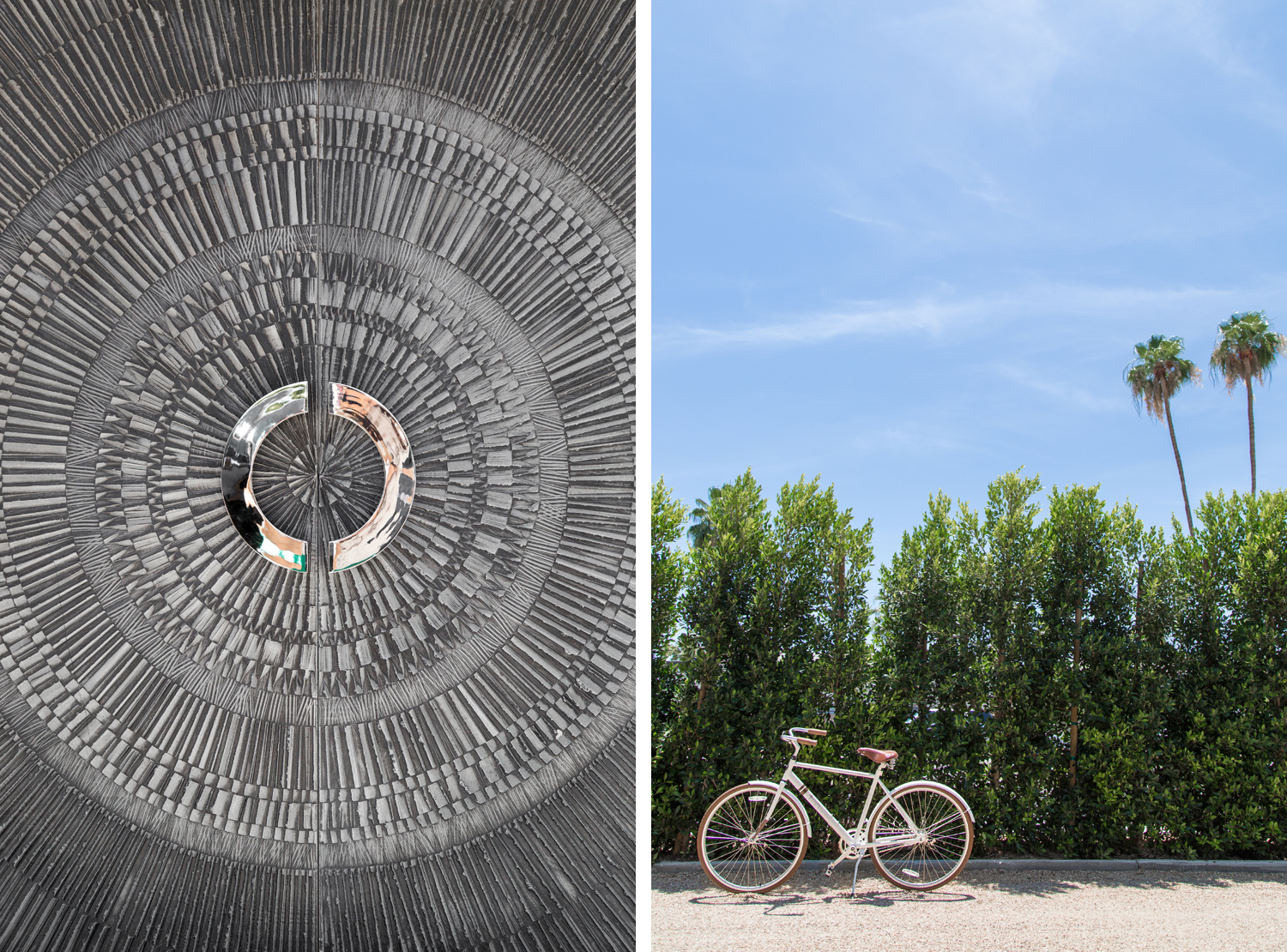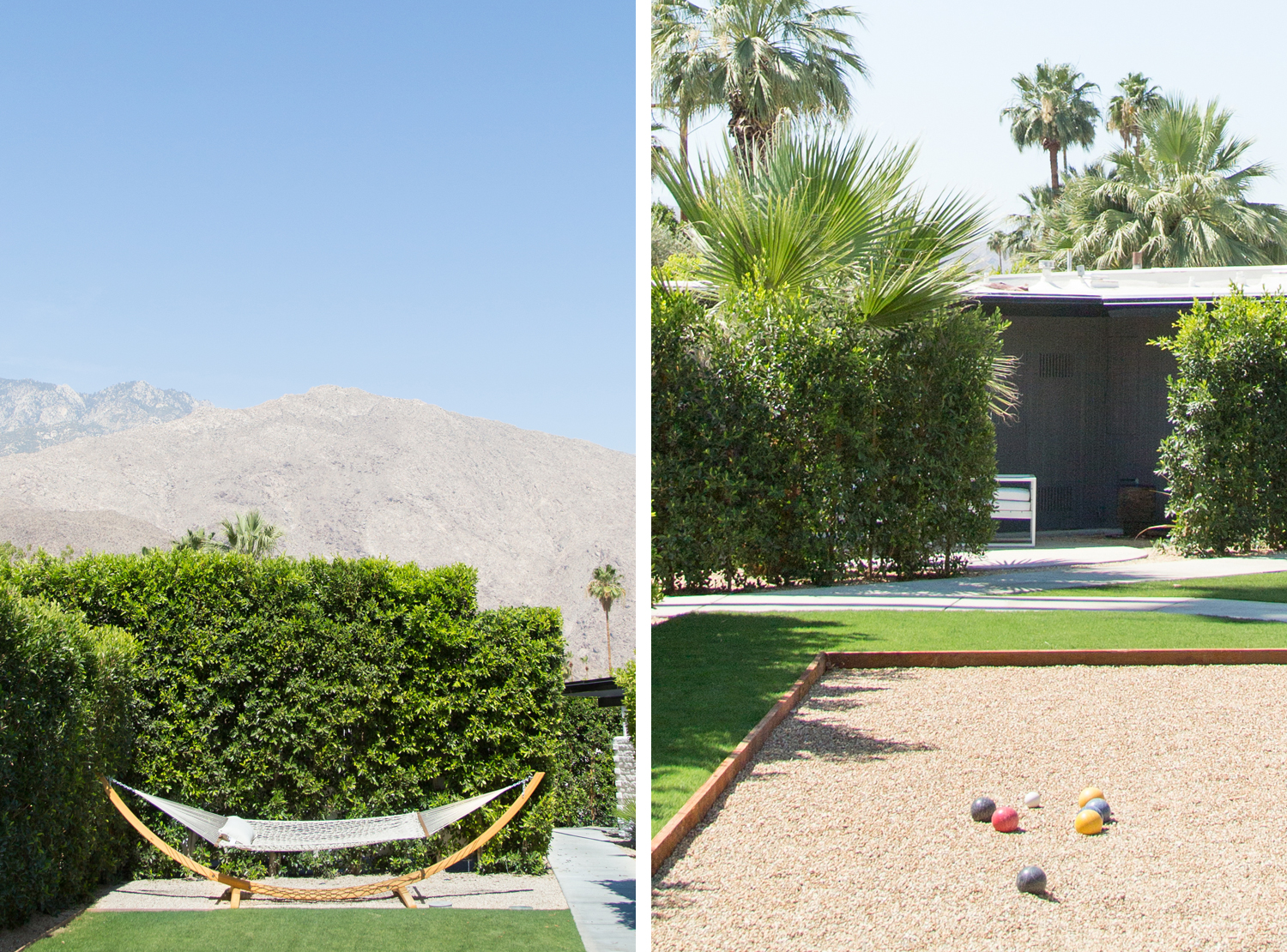You made a wise choice to visit Palm Springs, where the sun shines 360 days a year. As you pull up in front of the Avanti Hotel, the contemporary exquisite stone entrance affirms that you also made the right decision for your home away from home…especially if you brought your pup.
The secure hotel requires newcomers to ring the doorbell. Suddenly, Jim Rutledge, the owner, and manager opens the door, for he lives on site. His huge smile and very welcoming greeting immediately help you understand you are about to have a memorable experience.
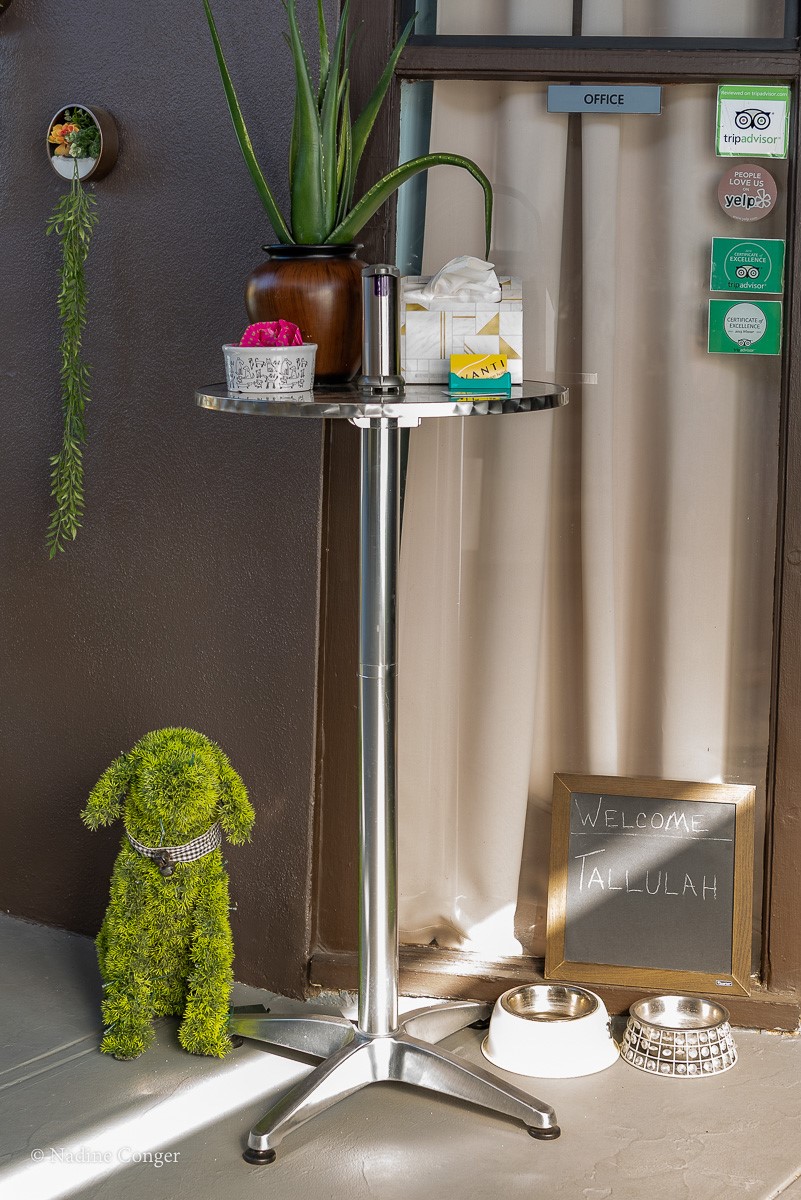
Pets are always welcome at the Avanti Hotel in Palm Springs.
Dogs are very welcome at Avanti. Next to the registration area is a knee-high dog constructed of real looking plants sitting beside a chalkboard welcoming your dog with their name and a water dish. When is the last time your dog has been welcomed in such a gracious manner?
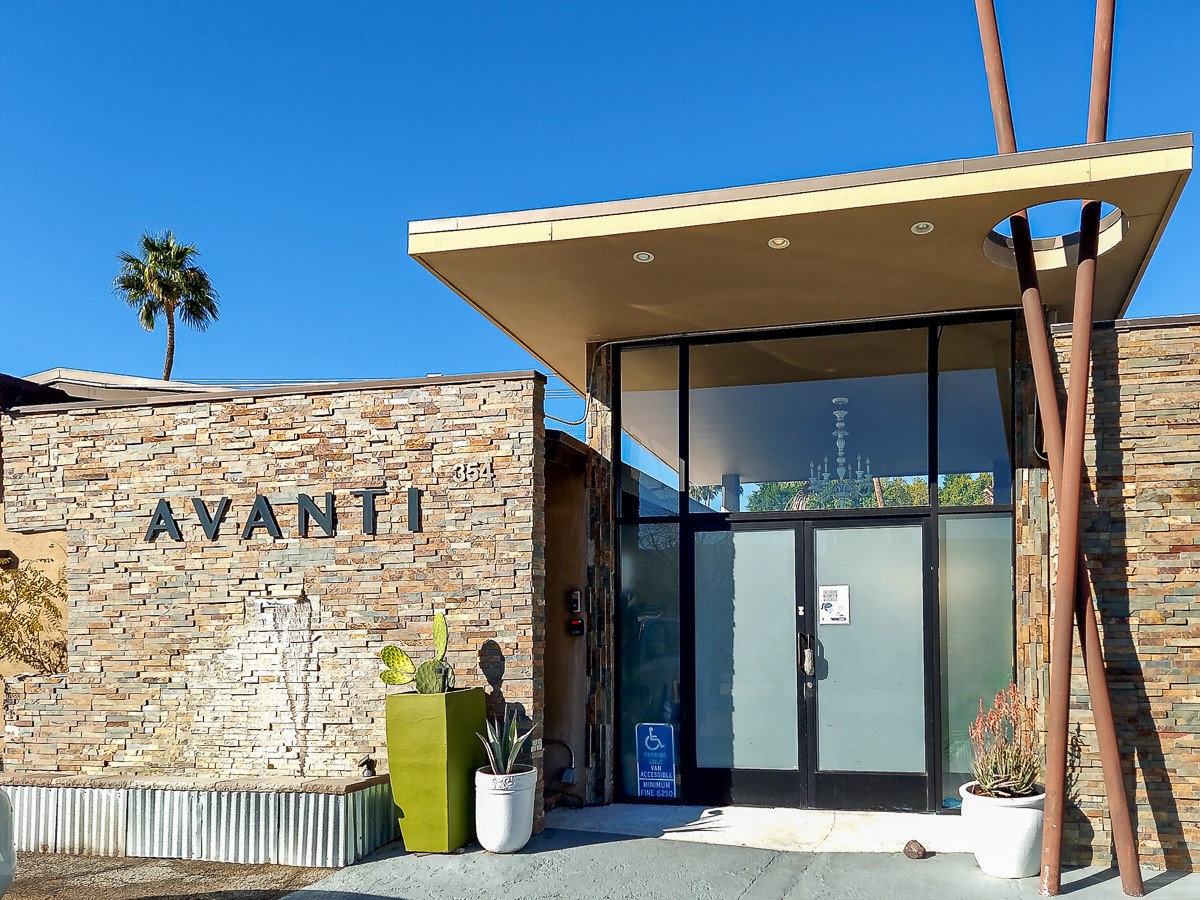
Avanti View as you enter into the complex.
When you look around the space, you see the spacious pool surrounded by the ten rooms identified by bright sunshine-yellow doors. Framing the doors are full-length beige drapes, which help define each space.
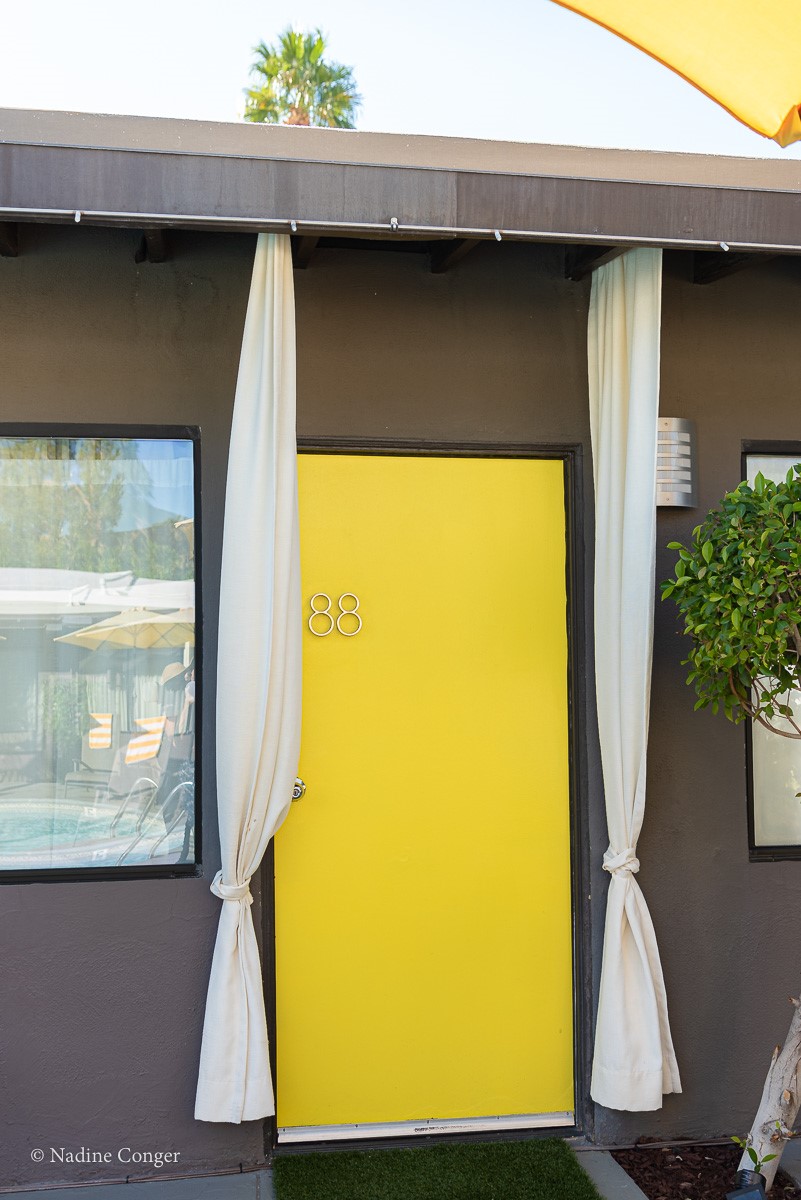
Lucky room 88 at Avanti Hotel in Palm Springs.
If you are fortunate, you will be checked into the lucky room, Room 88. Why the number 88 when there are only ten rooms, you ask? The number four is considered unlucky by those with traditional Chinese beliefs. When management learned about the number four, they had already numbered all the rooms. Since eight is deemed lucky, they decided to make room number four twice as lucky by labeling it 88.
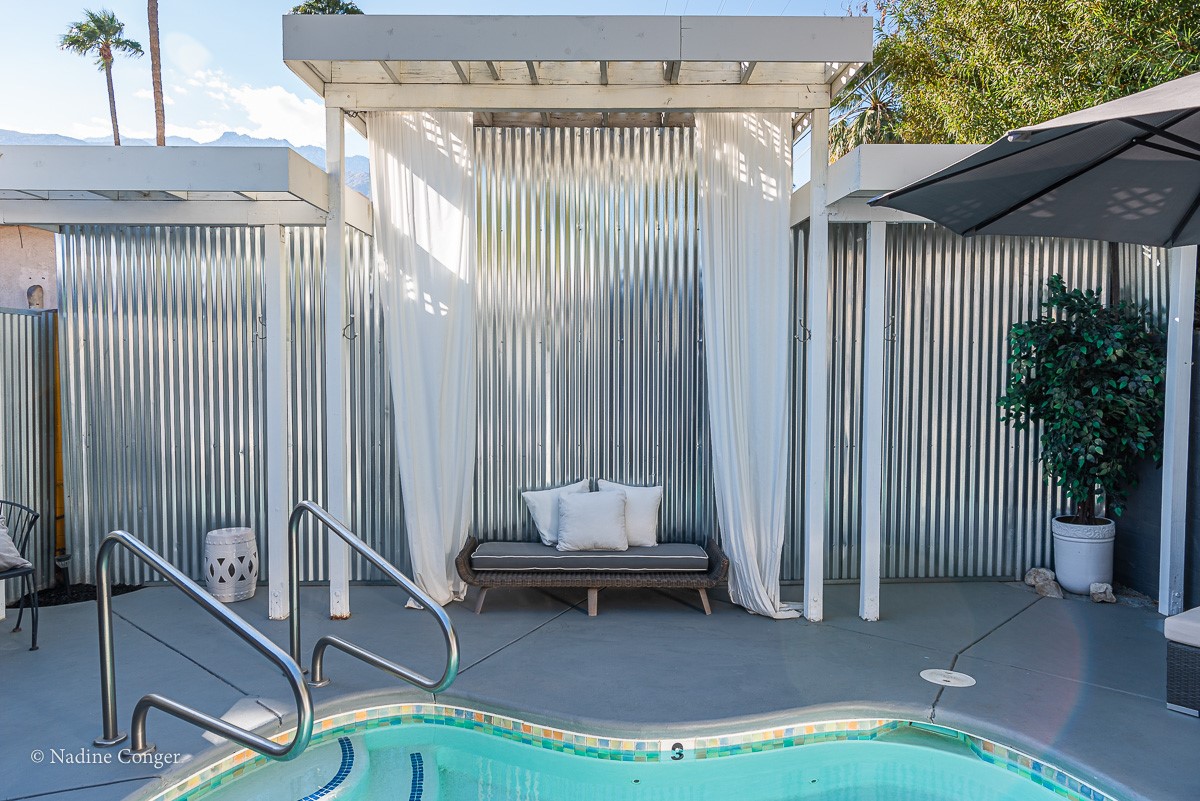
The hot tub is open 24/7 at the Avanti Hotel.
It is not often you will find a spacious hot tub separated from the main pool. In this case, it is not only separated from the main pool, but it also has its own private walled space. Comfy benches are strategically placed around the perimeter, and artwork adorns the walls. Once again, the long beige drapes make an appearance adding to the elegance of space.
The jacuzzi holds 12 people. Can you imagine having a retreat here and saying, Let’s meet at the hot tub for a brainstorming session? By the way, the hot tub and pool are open 24 hours a day. However, there are rules, and they will be enforced.
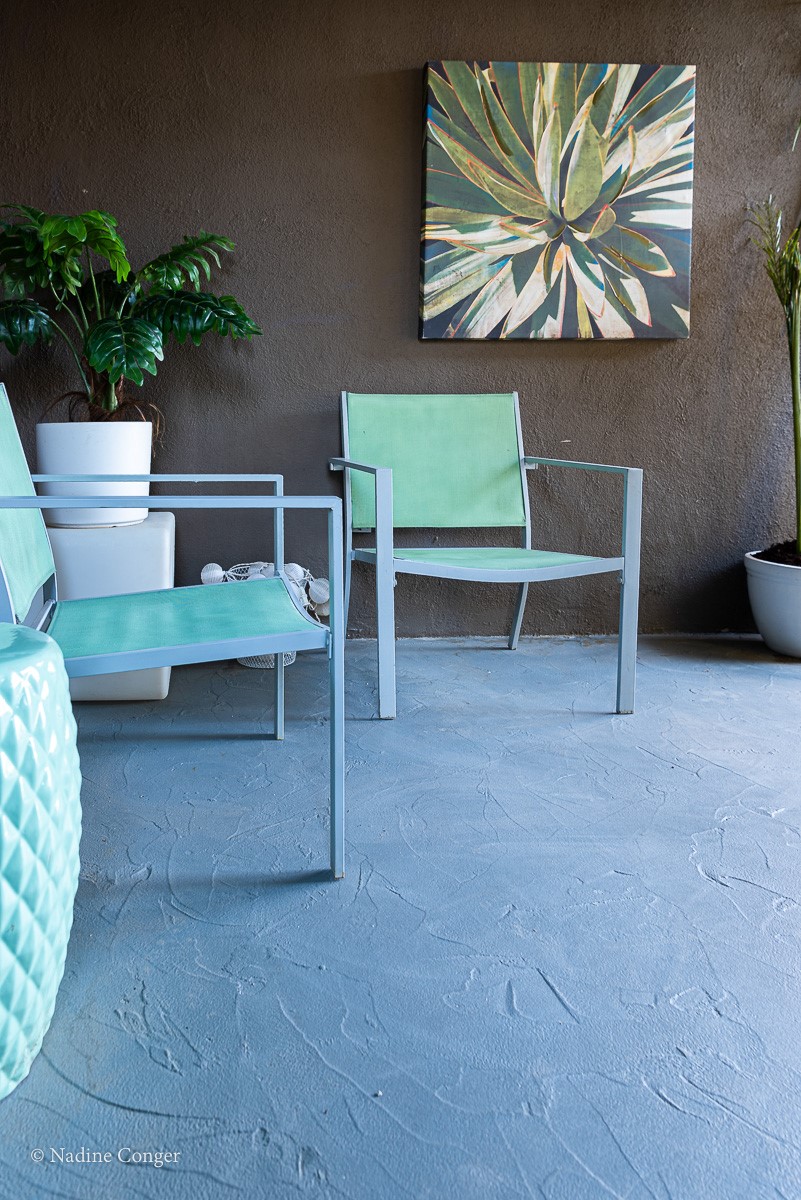
Avanti Hotel patios offers refuge from the world.
Four rooms have kitchenettes and one a full kitchen. So even though snacks are freely available, it is good to know you can prepare your own romantic dinner if you so choose. Or order from a Palm Springs restaurant that will deliver meals complete with cocktails. Some of the rooms have large patios with a dining table. These patios are an excellent place to hang out if you want to do some quiet reading.
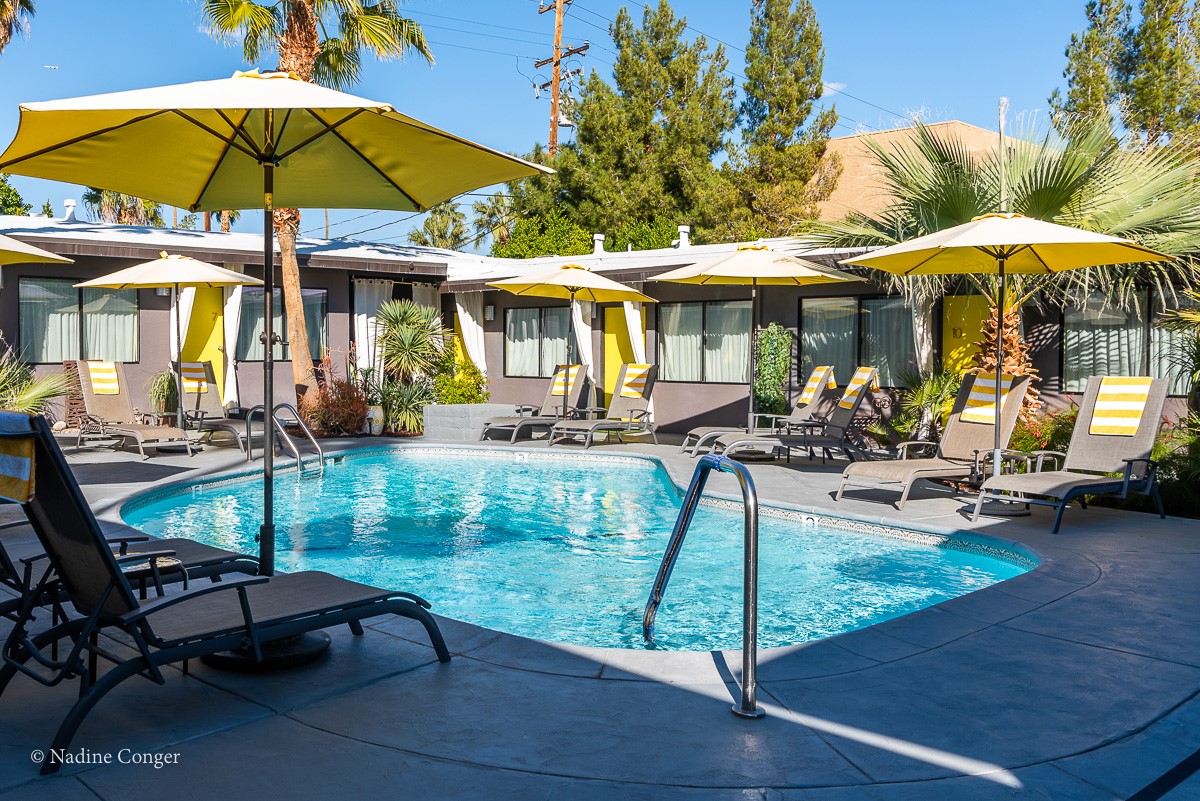
Breakfast is Served Poolside at the Avant Hotel in Palm Springs.
Breakfast is served around the pool. As Jim was quick to point out, it is a cold breakfast. However, there is more than enough to get you on your way for the day.
After a day of sightseeing, you will want to get back for Happy Hour, which will be the perfect time to mingle with other guests, often from other countries. For example, the Avanti has the same visitor from Iceland come back a year and after year.
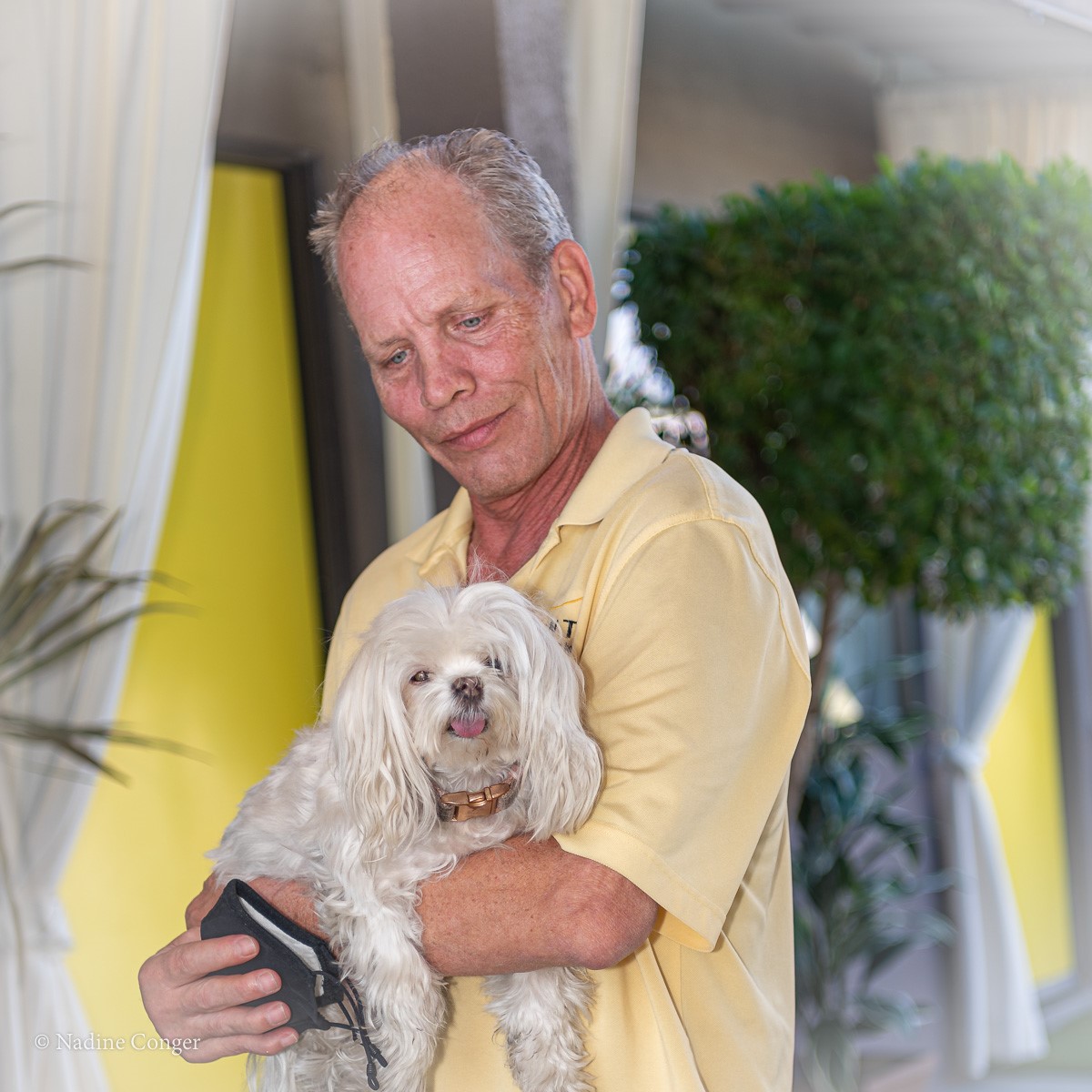
Avanti owner and Manager Jim Rutledge with doggy diva Maya
Jim Rutledge is the owner and has been watching over the development of the space for ten years. Here he is pictured with his companion, Maya, who is the diva of the Avanti.
He keeps a close pulse on the community. Thus, guests have access to a wealth of information to decide how they spend their time exploring the Coachella Valley.
When asked what brings him joy about living here and managing the Avanti, his reply was with a large smile, “It’s the people I meet from all over the world.”

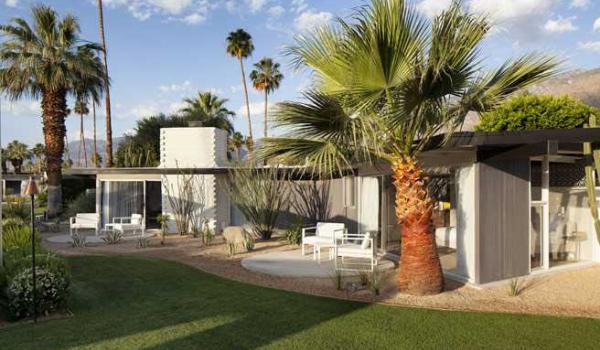
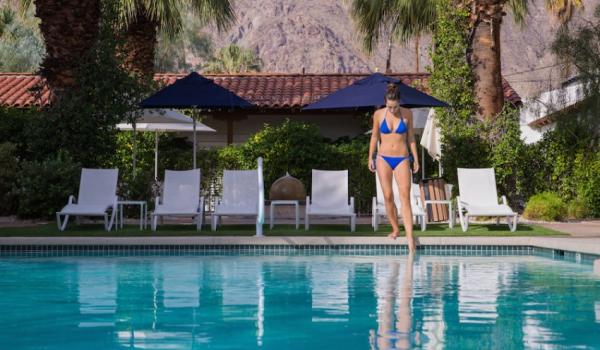
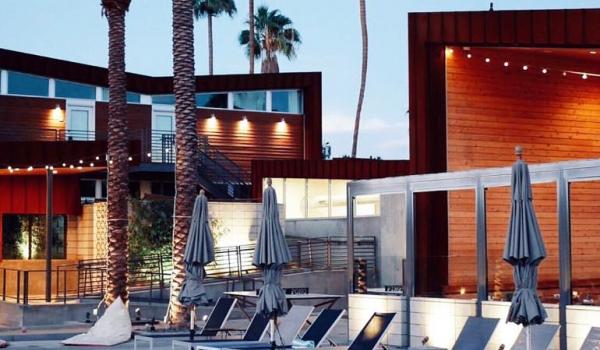
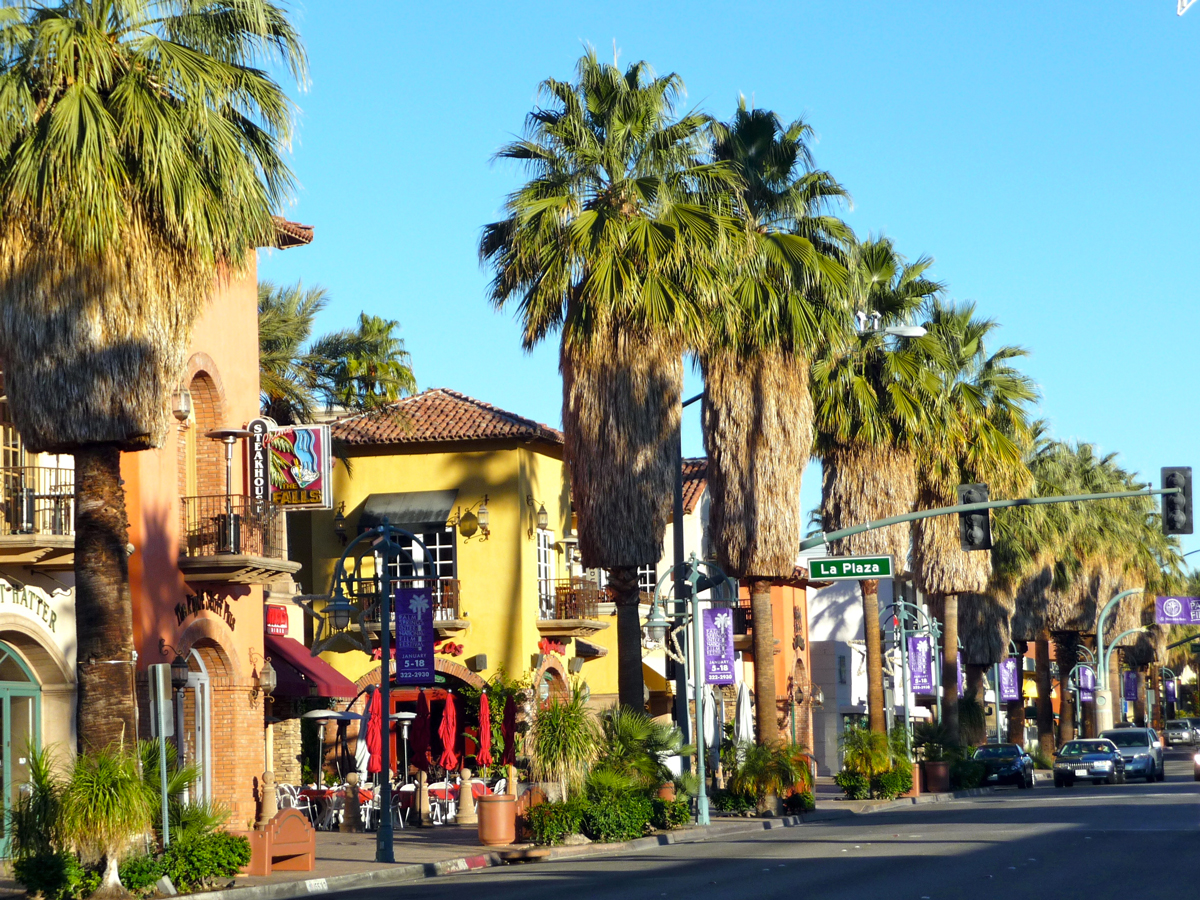
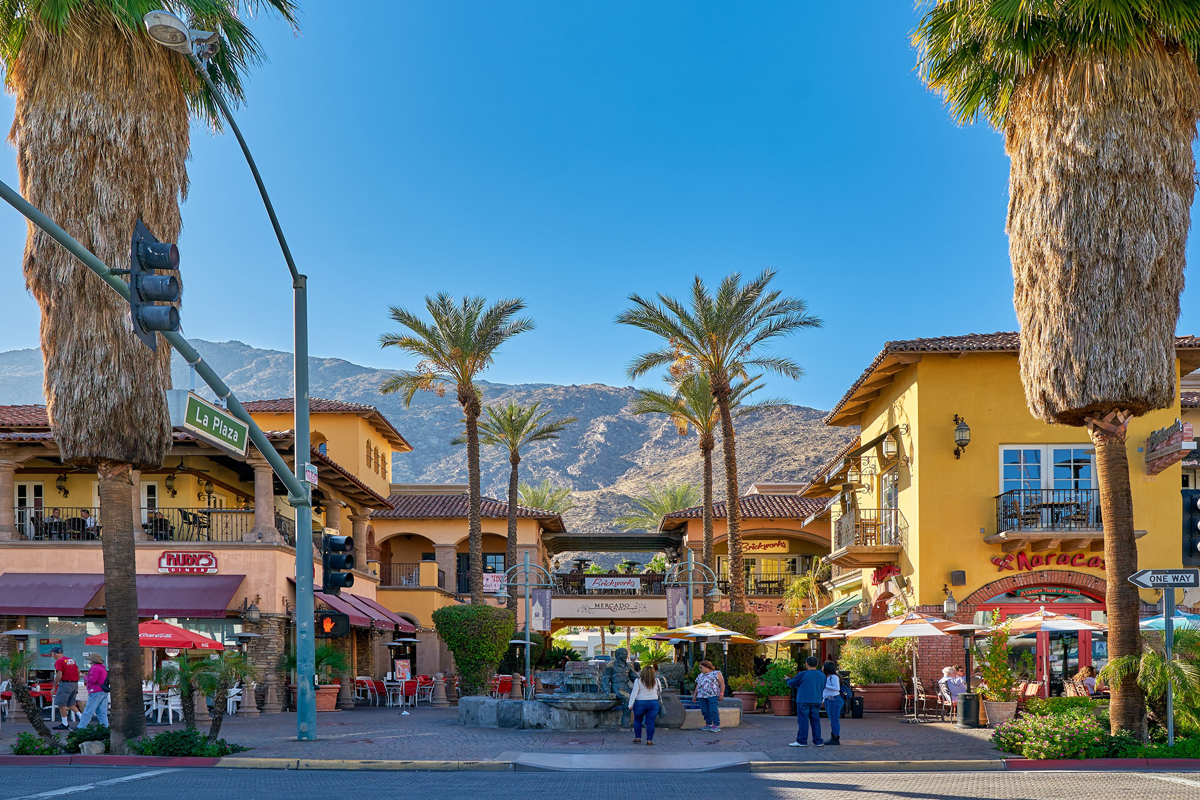
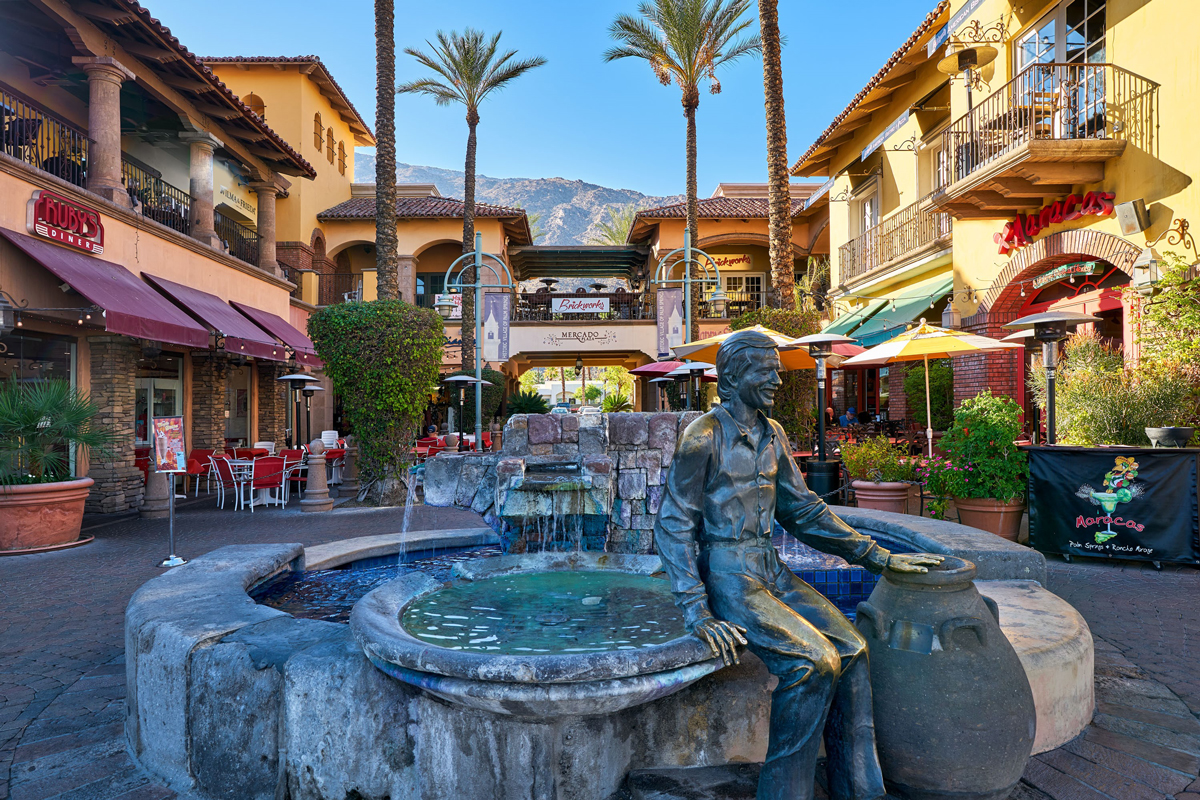
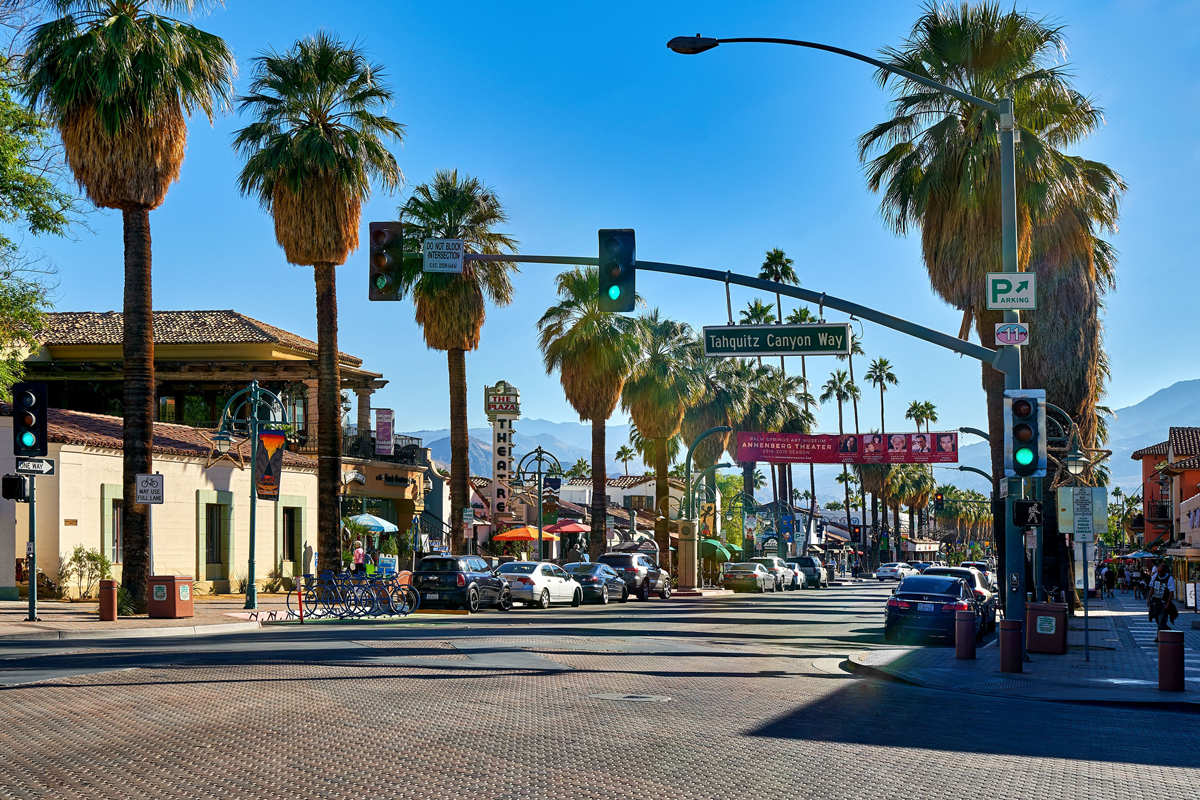







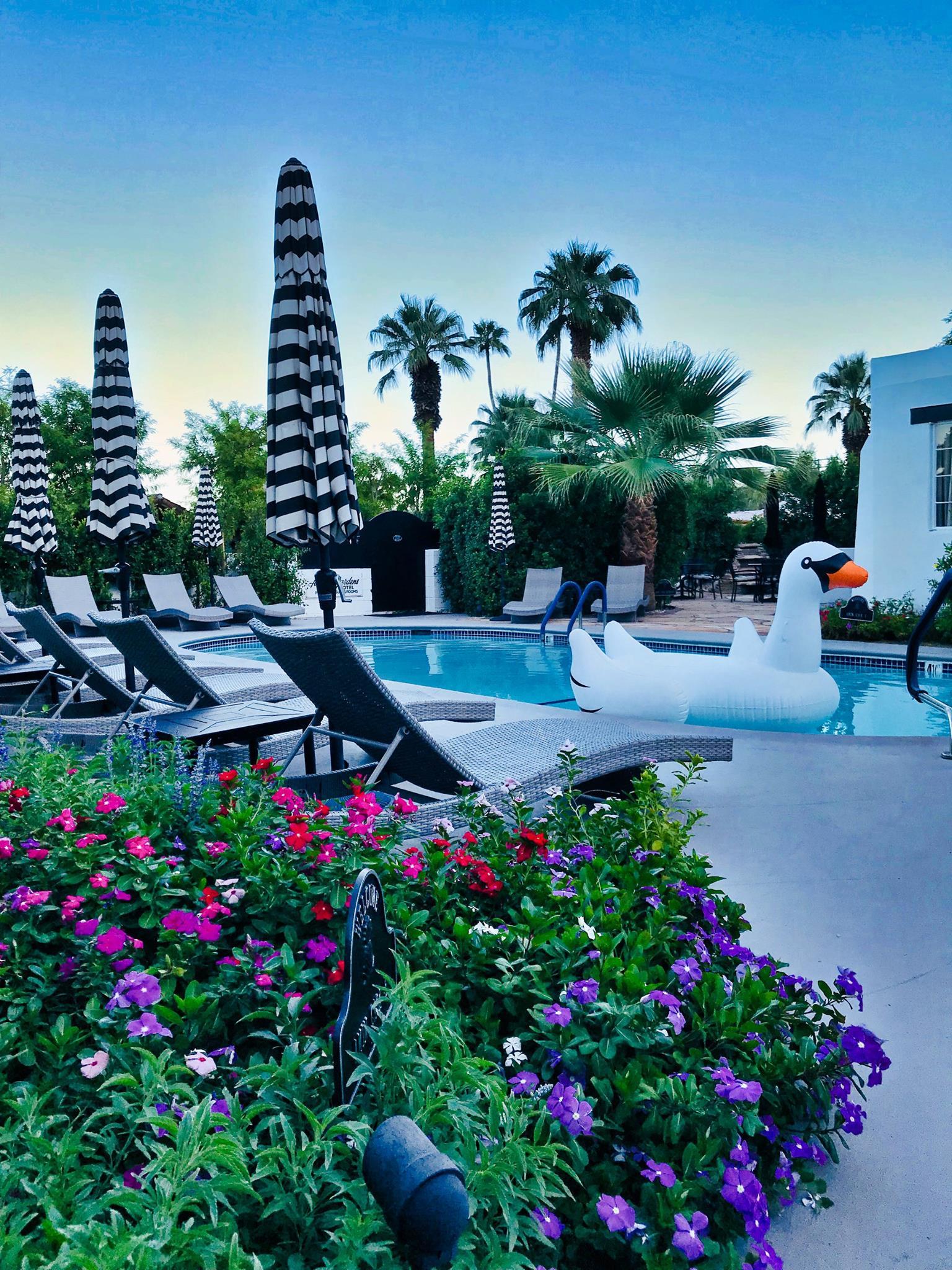
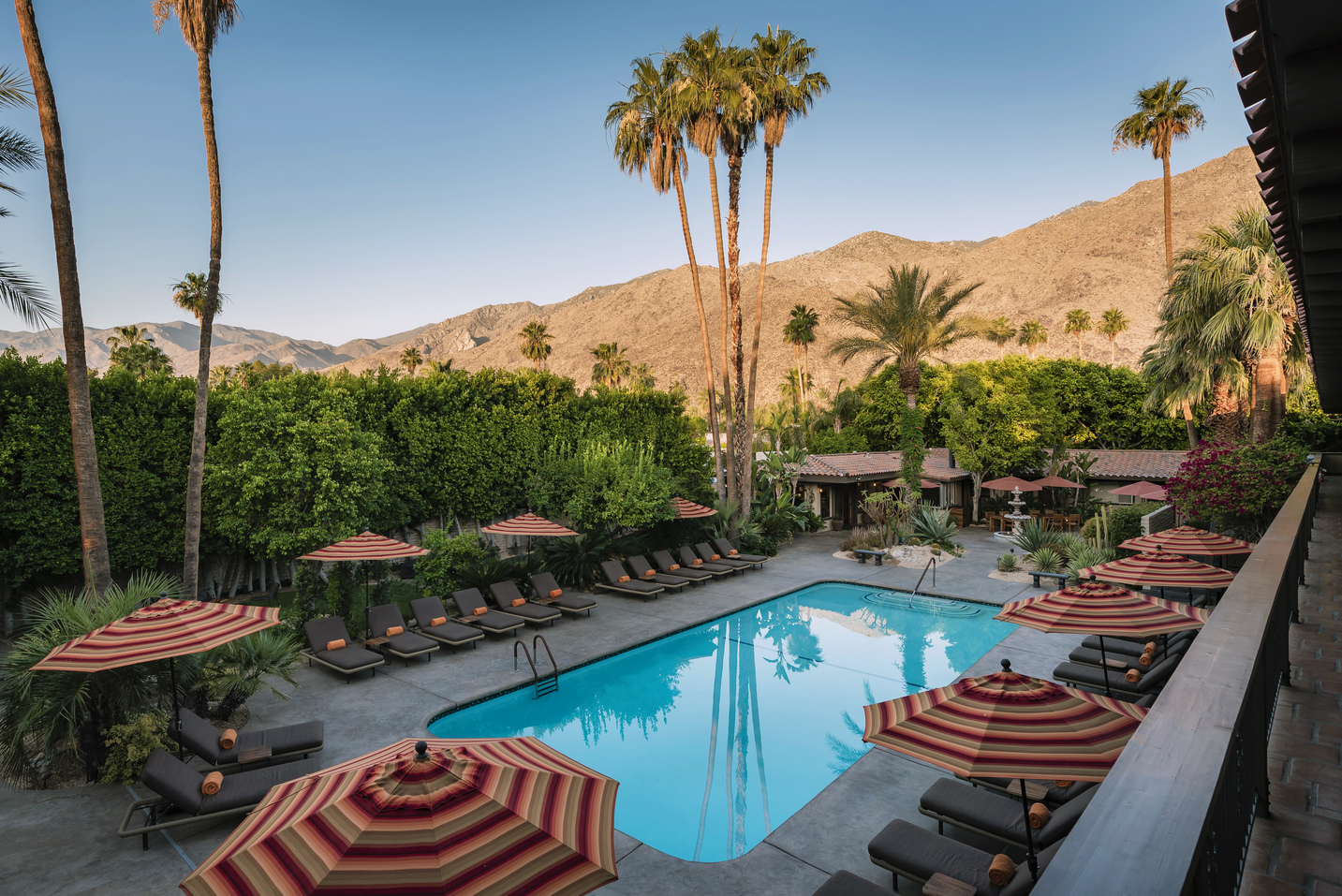
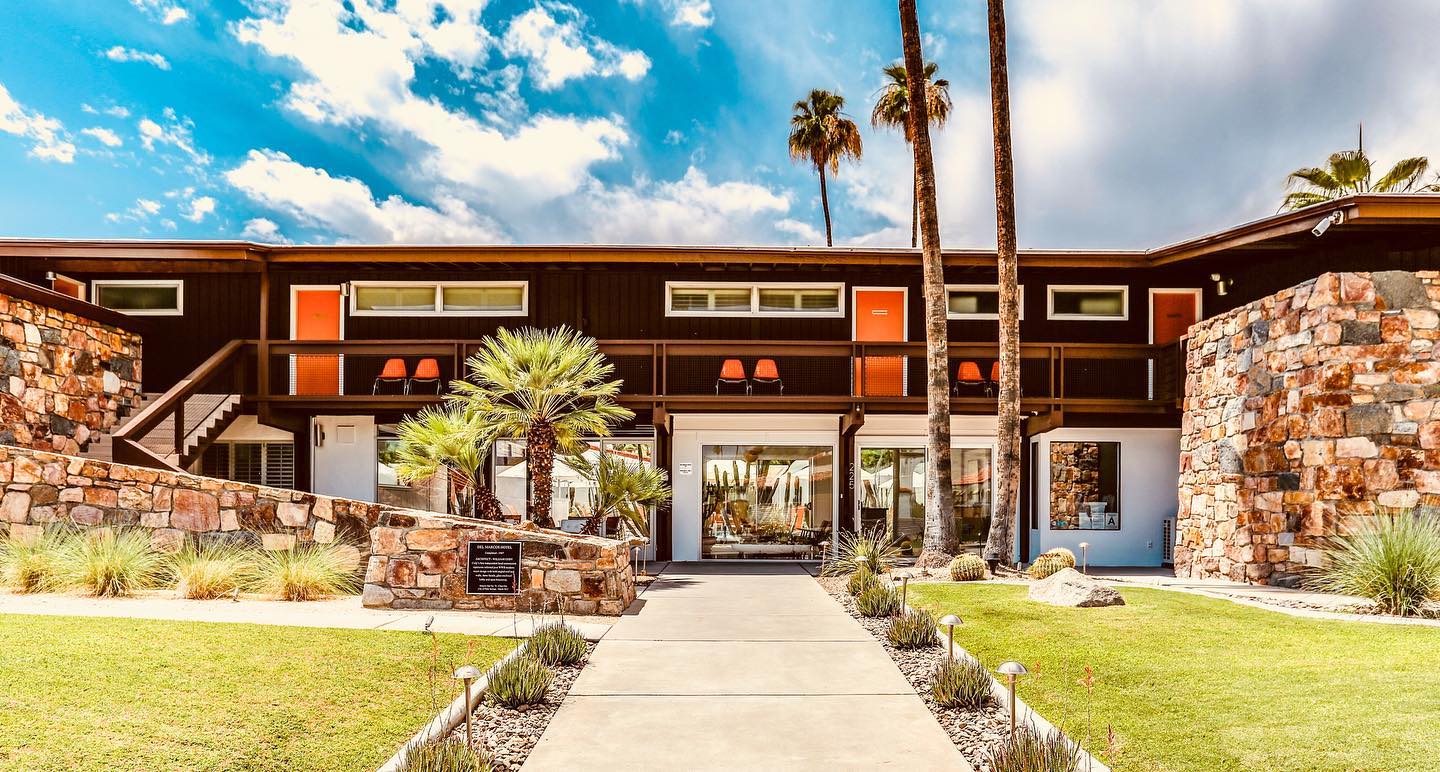
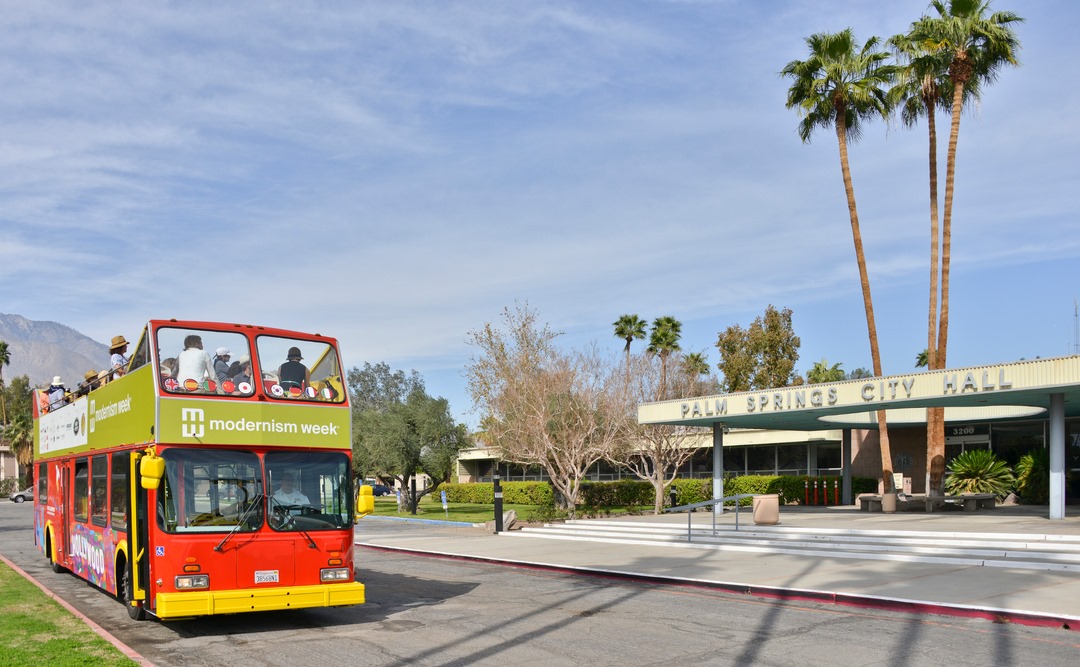

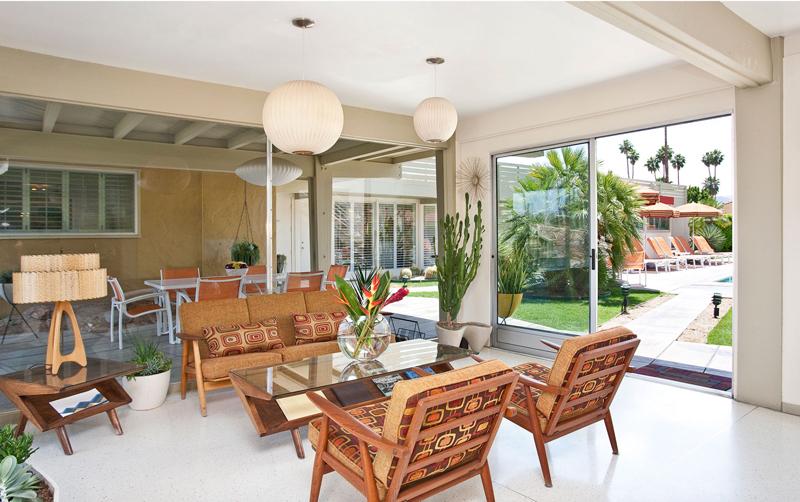
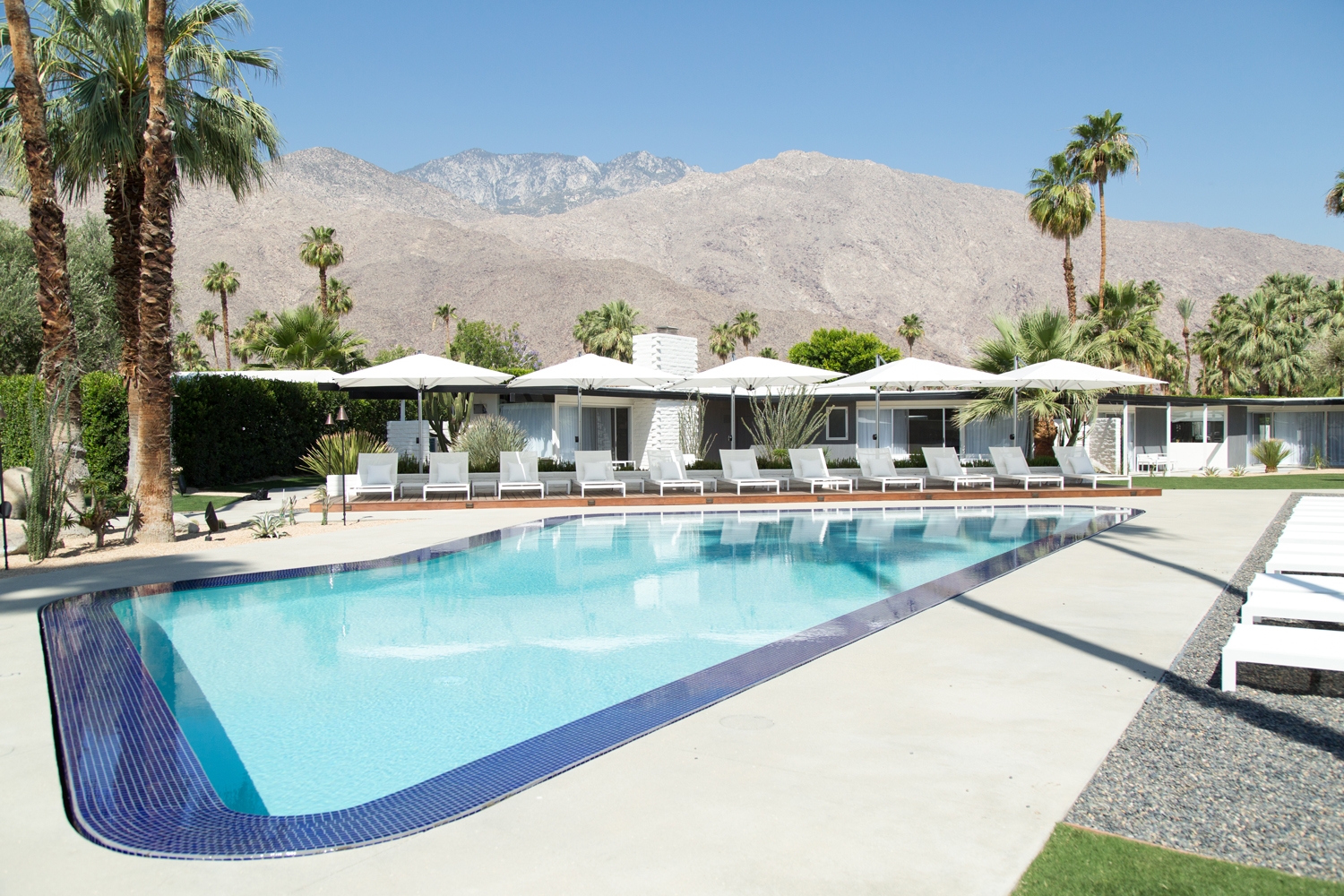
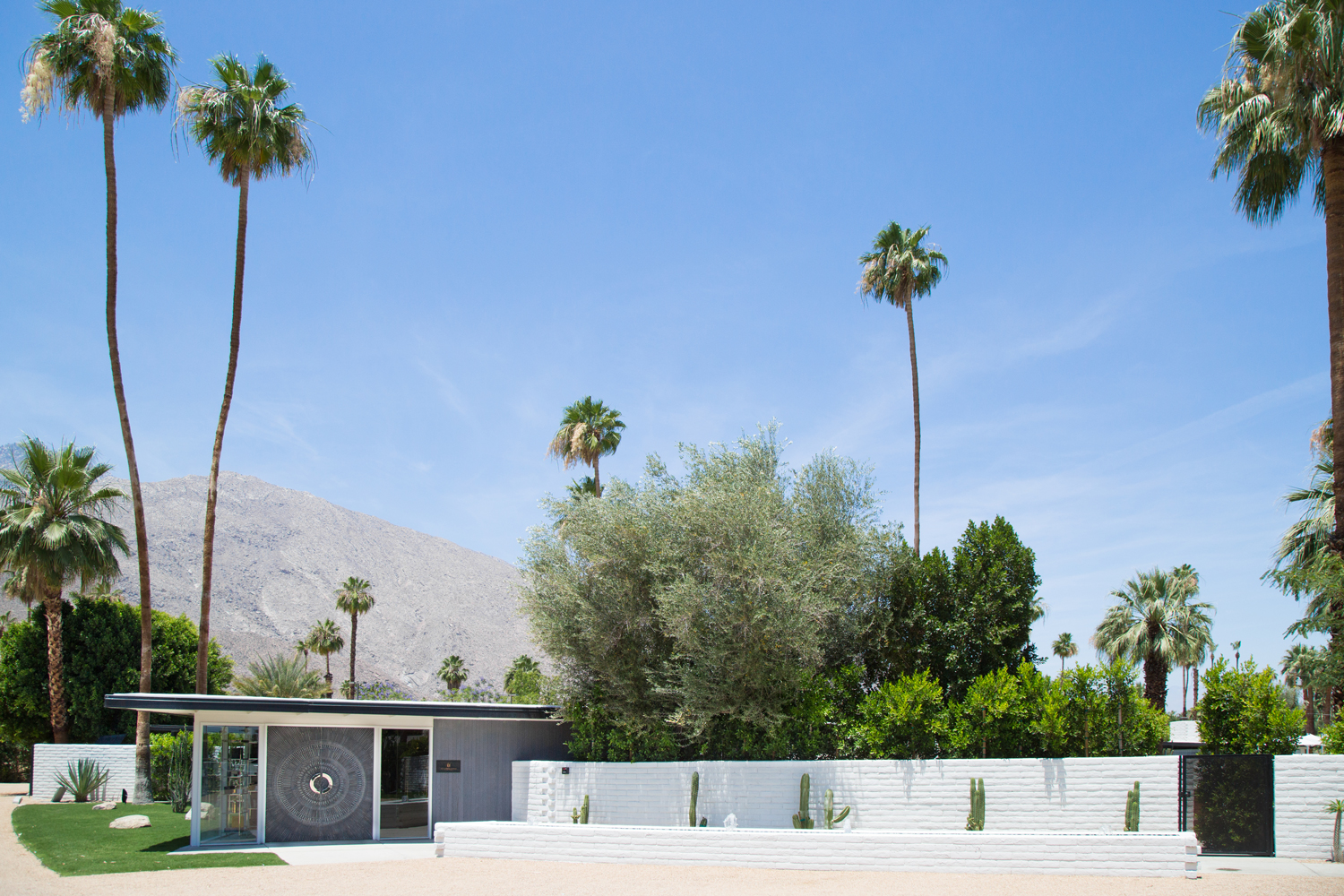
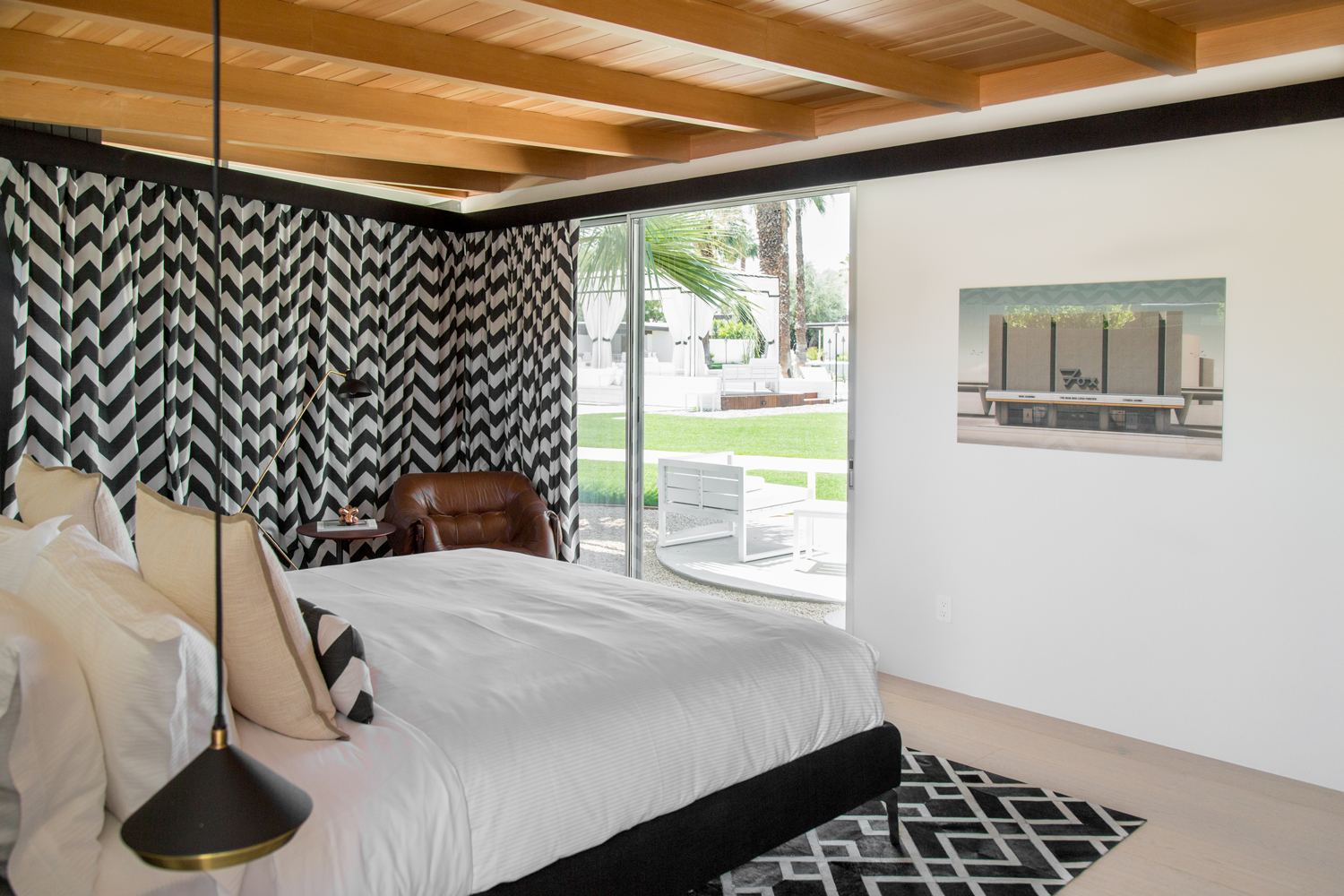
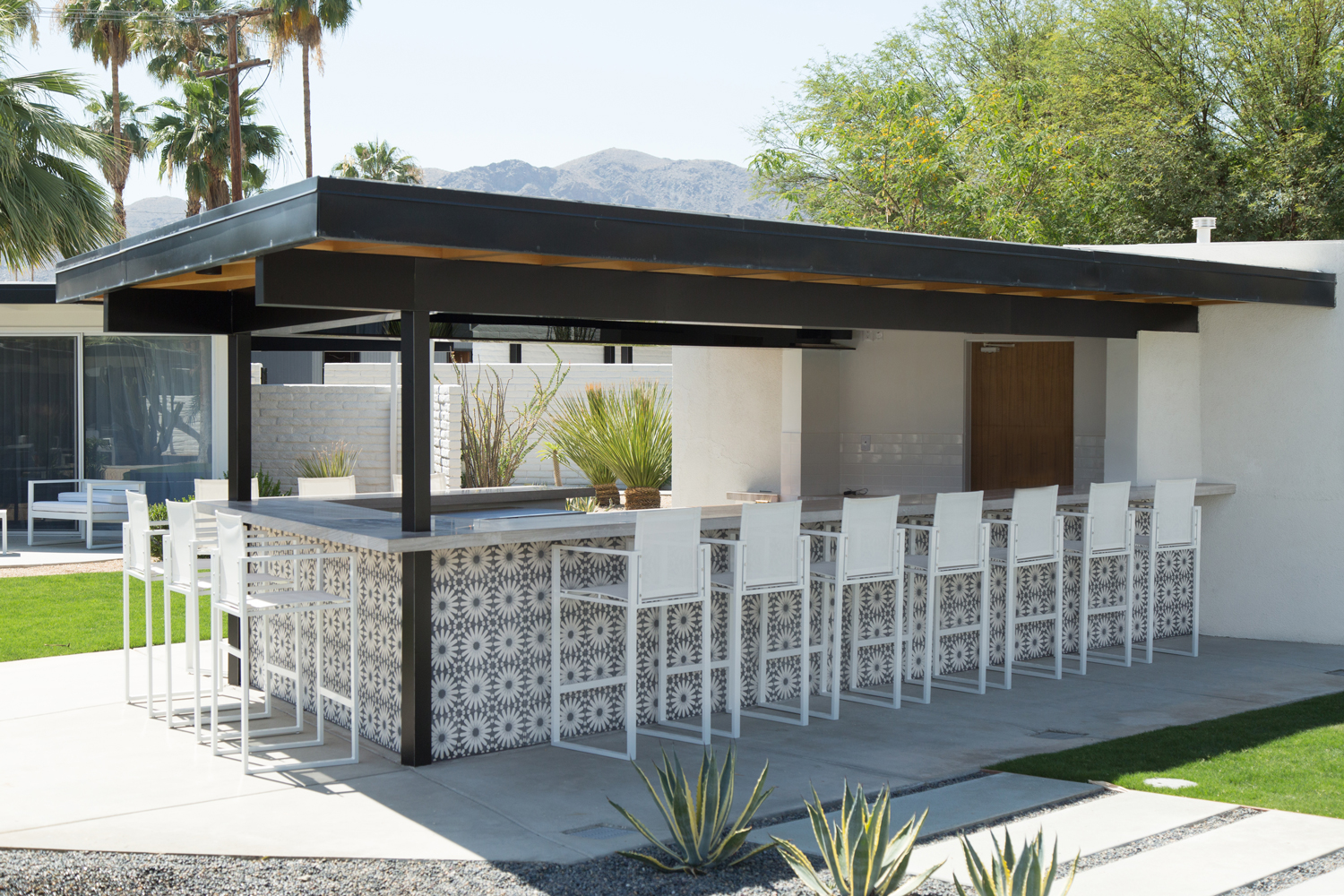

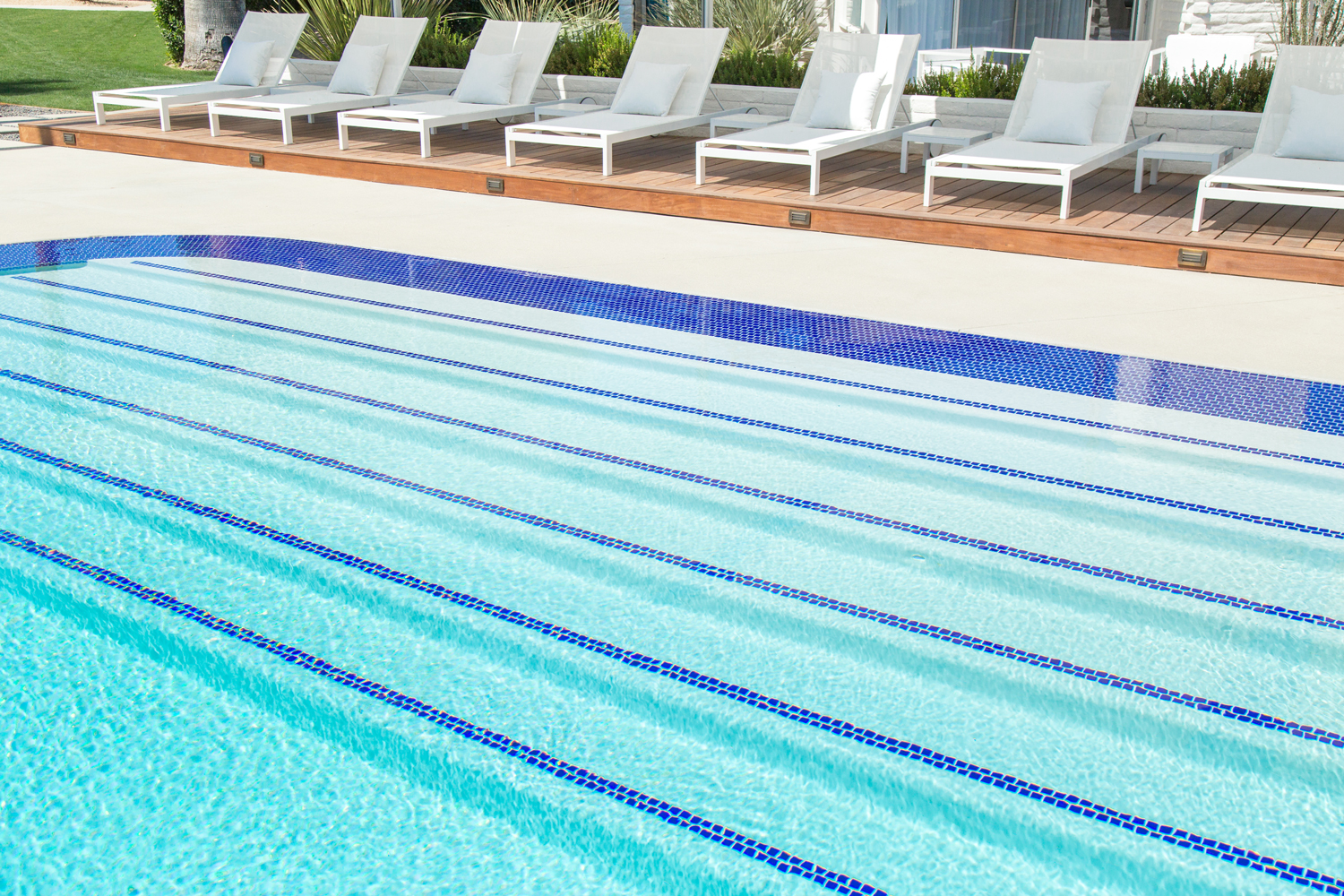
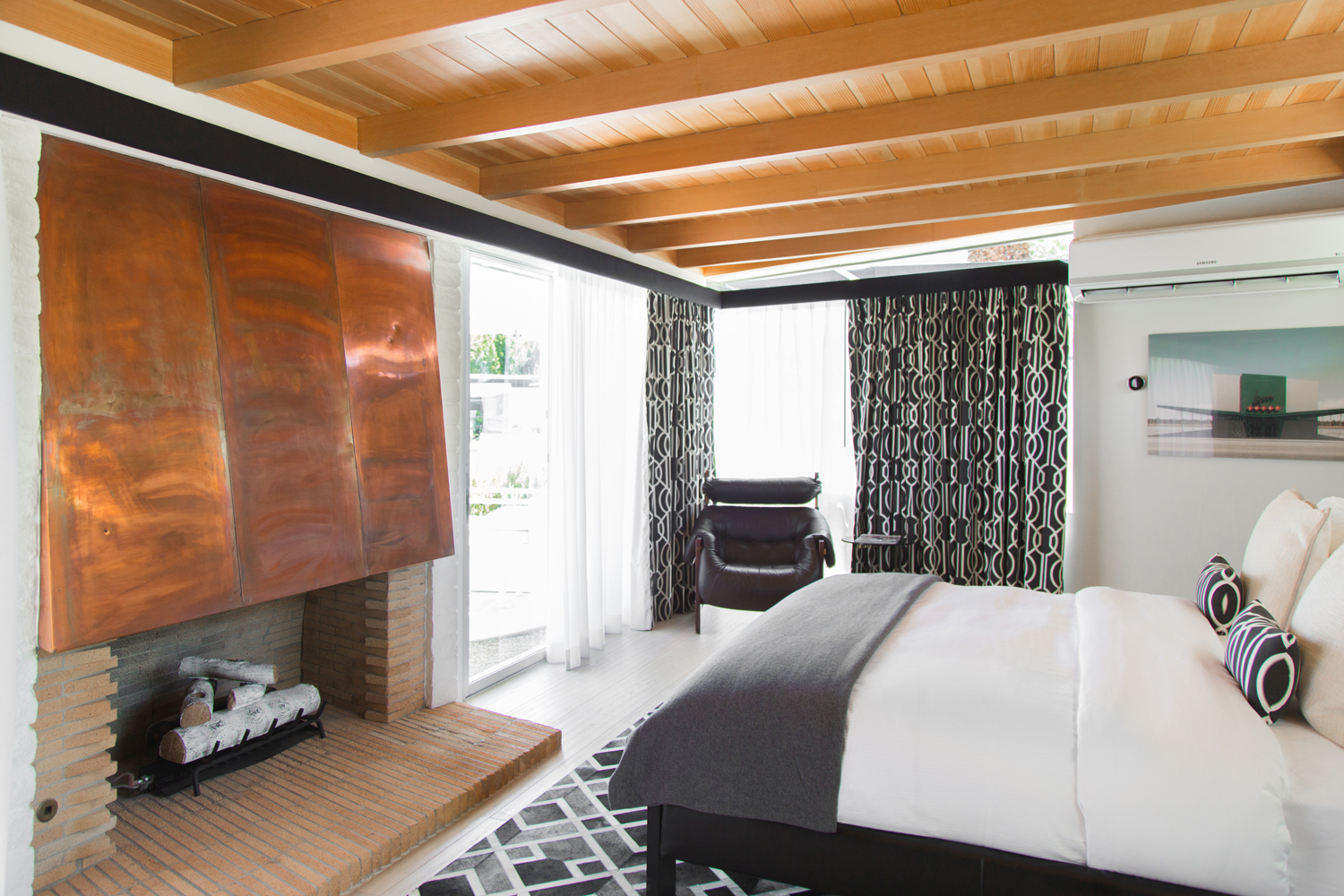
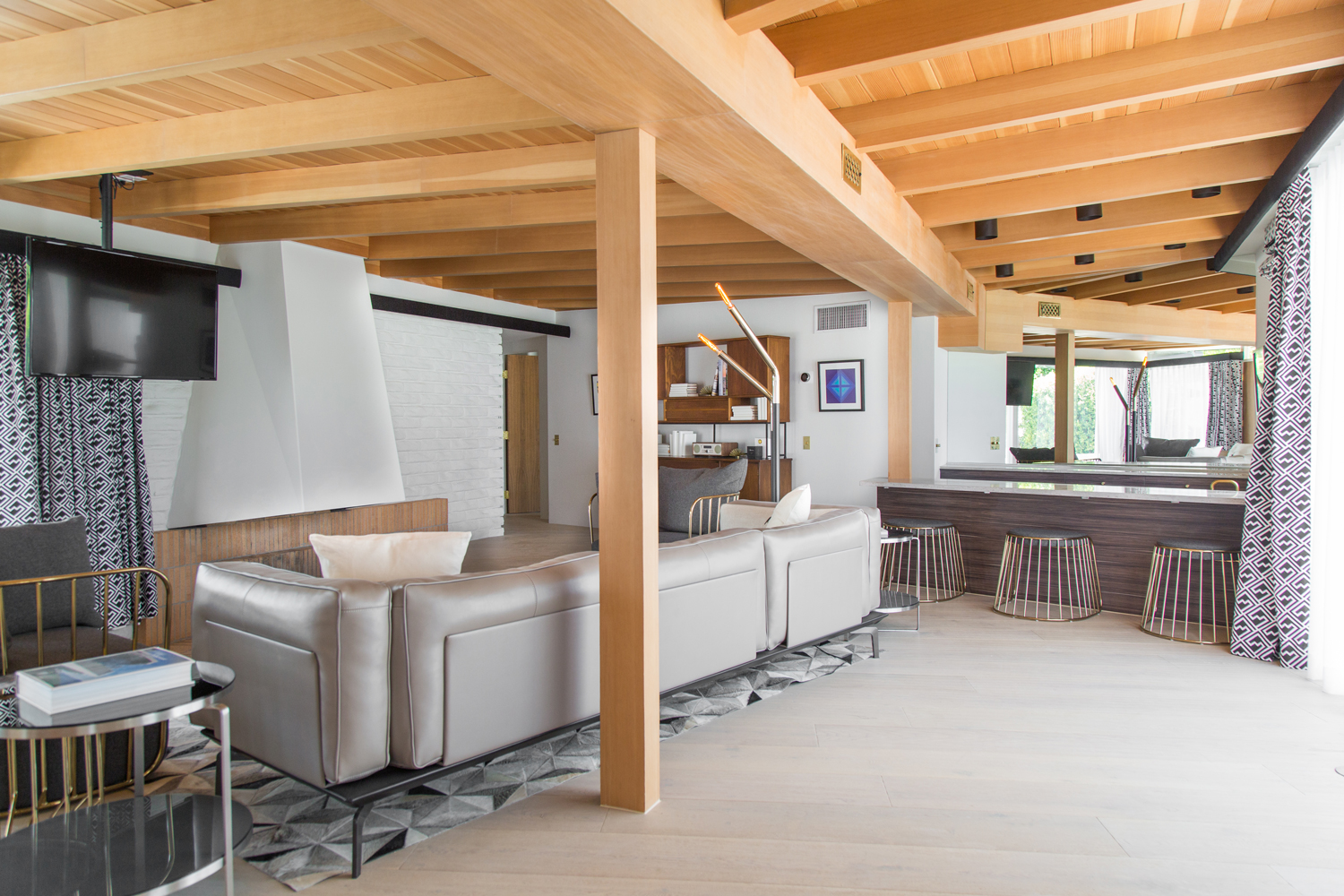
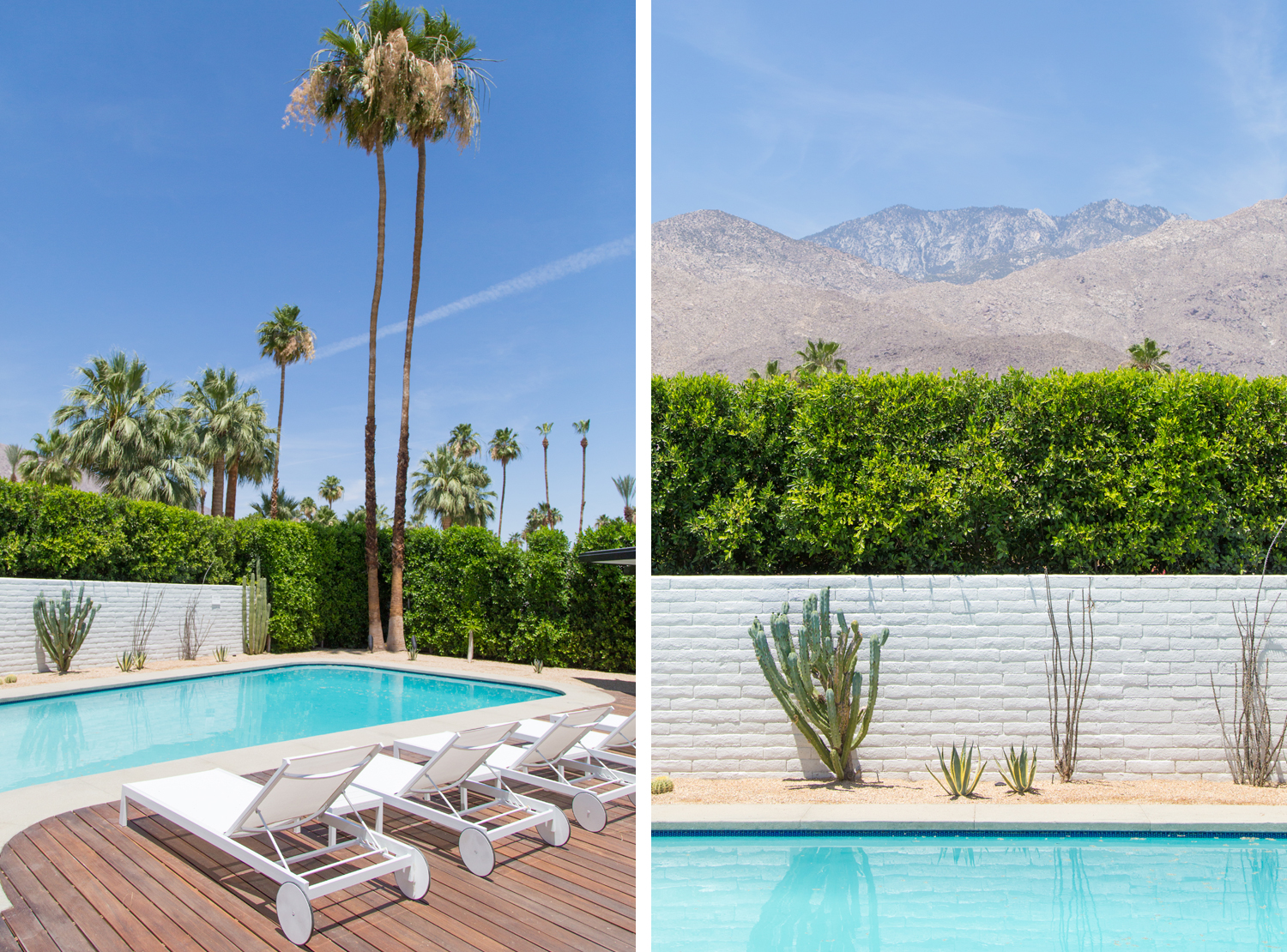 Other Instagram-able details I love at L’Horizon include the black and white multi-patterned design motifs around the property; the ornate starburst front doors; bikes available for guest use during your stay; bocce ball court; hammocks; and the desert landscaping throughout the resort. The property is adults only, but your four-legged friends are welcome!
Other Instagram-able details I love at L’Horizon include the black and white multi-patterned design motifs around the property; the ornate starburst front doors; bikes available for guest use during your stay; bocce ball court; hammocks; and the desert landscaping throughout the resort. The property is adults only, but your four-legged friends are welcome!